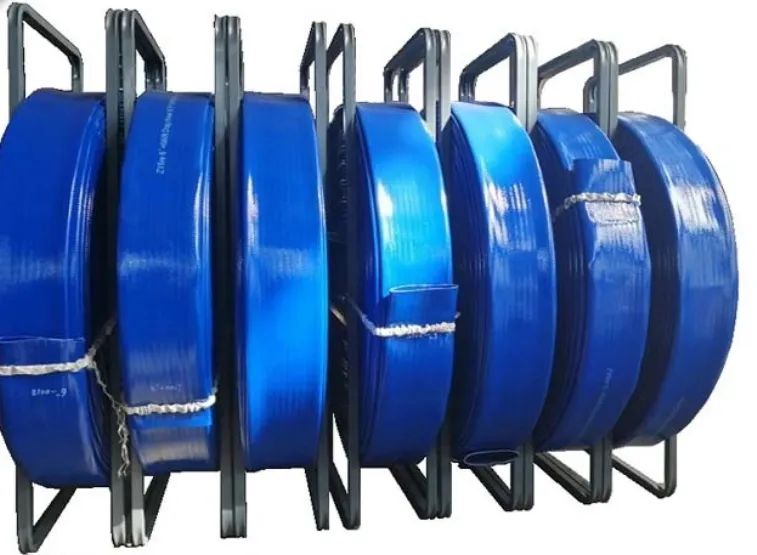pvc vs rubber vs polyurethane air hose
PVC vs Rubber vs Polyurethane Air Hoses A Comprehensive Comparison
When it comes to selecting the right air hose for your pneumatic tools and air compressor systems, choosing the correct material is crucial. Among the most popular options available on the market are PVC (polyvinyl chloride), rubber, and polyurethane. Each material has its own set of advantages and disadvantages, and understanding these differences can help you make an informed decision that meets your specific needs.
PVC Air Hoses
PVC air hoses are highly regarded for their cost-effectiveness and versatility. They are lightweight, which makes them easy to handle and transport. PVC hoses are resistant to weather conditions and UV rays, making them suitable for outdoor use. One of the primary advantages of PVC is its affordability; it is generally less expensive than rubber and polyurethane options. However, PVC hoses can be less durable, particularly in extreme temperatures. Cold weather can make PVC less flexible, leading to kinks and cracks.
Another downside is that PVC hoses may not handle extreme jobs well; they can be more prone to abrasions and punctures compared to rubber and polyurethane. While PVC hoses are suitable for light to medium-duty tasks, their limitations make them less ideal for demanding applications.
Rubber Air Hoses
Rubber air hoses are well-known for their exceptional durability and flexibility. They are capable of handling extreme temperatures and various weather conditions without losing their shape or performance. Rubber hoses resist abrasions and are less likely to kink, making them suitable for heavy-duty use, such as in industrial environments.
Another significant advantage of rubber hoses is their excellent pressure rating, enabling them to handle high-pressure applications more effectively than both PVC and polyurethane. However, all these benefits come at a cost; rubber hoses are generally heavier and more expensive than their PVC counterparts, which may make them less appealing for casual users or those with lighter applications.
pvc vs rubber vs polyurethane air hose

One potential drawback of rubber hoses is that they can be more challenging to handle due to their weight and rigidity. They might also emit a rubber odor initially, which some users find off-putting. Despite these issues, for those needing a reliable and robust solution, rubber hoses are often the go-to choice.
Polyurethane Air Hoses
Polyurethane air hoses are increasingly popular due to their impressive combination of flexibility, durability, and lightweight design. These hoses are known for their excellent memory, meaning they can return to their original shape after being coiled or bent, reducing the chances of kinking. They perform exceptionally well in both high and low temperatures, making them suitable for all sorts of environments.
Polyurethane hoses are also more resistant to abrasion and puncture than PVC and can withstand external wear and tear effectively. Additionally, they are highly resistant to hydrocarbons and chemicals, making them a better choice for more specialized applications. However, like PVC, polyurethane hoses tend to be more expensive than rubber, which could be a consideration for budget-conscious buyers.
Despite their advantages, one potential drawback is that polyurethane hoses may not hold up as well under extremely high pressures as rubber hoses. It's also worth noting that their flexibility can lead to increased wear on fittings if not properly managed.
Conclusion
In conclusion, each type of air hose—PVC, rubber, and polyurethane—has its pros and cons that make them suitable for different applications. If you're looking for an economical and versatile solution for light to medium-duty tasks, PVC may be the best choice. For heavy-duty applications requiring durability and high pressure, rubber hoses rise to the forefront. If you need a lightweight, flexible, and mildew-resistant option that performs well in various conditions, polyurethane is a strong contender.
Ultimately, the best choice depends on your specific needs, budget, and the environment in which you intend to use the hose. Evaluating these factors will help you select the air hose that best meets your requirements.
-
Top Quality Oxy Acetylene Hoses for Sale Fit for Welding DemandsNewsJul.28,2025
-
The Future of Pneumatic Air Tubes in IndustryNewsJul.28,2025
-
Superior and Reliable LPG Hose Pipe Solutions for Every NeedNewsJul.28,2025
-
Exceptionally Durable and Versatile Premium Braided PVC TubingNewsJul.28,2025
-
Best Adapters for Connecting Garden Hose to PVC Pipe ConnectionsNewsJul.28,2025
-
The Essential Role of LPG Hoses in Safe and Efficient Gas DistributionNewsJul.16,2025














